Enas Altarawneh
Knowledge-Aware Conversation Derailment Forecasting Using Graph Convolutional Networks
Aug 24, 2024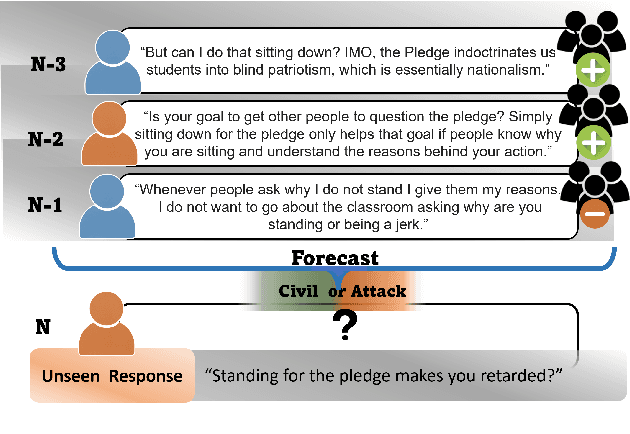
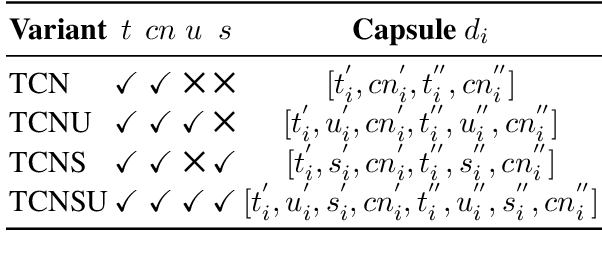
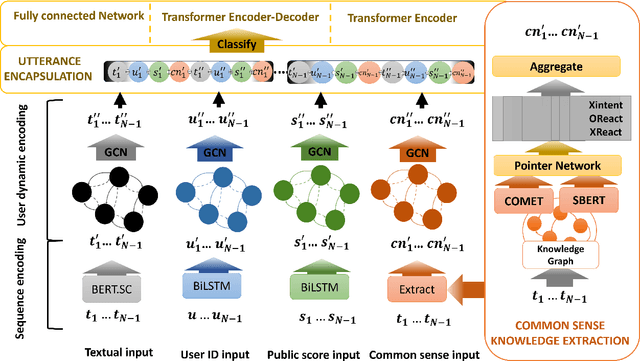
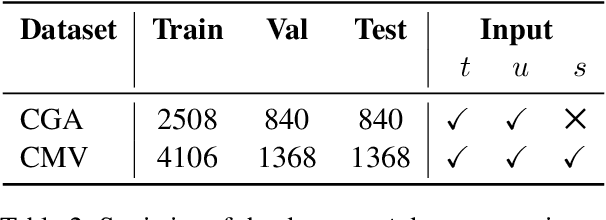
Abstract:Online conversations are particularly susceptible to derailment, which can manifest itself in the form of toxic communication patterns including disrespectful comments and abuse. Forecasting conversation derailment predicts signs of derailment in advance enabling proactive moderation of conversations. State-of-the-art approaches to conversation derailment forecasting sequentially encode conversations and use graph neural networks to model dialogue user dynamics. However, existing graph models are not able to capture complex conversational characteristics such as context propagation and emotional shifts. The use of common sense knowledge enables a model to capture such characteristics, thus improving performance. Following this approach, here we derive commonsense statements from a knowledge base of dialogue contextual information to enrich a graph neural network classification architecture. We fuse the multi-source information on utterance into capsules, which are used by a transformer-based forecaster to predict conversation derailment. Our model captures conversation dynamics and context propagation, outperforming the state-of-the-art models on the CGA and CMV benchmark datasets
Predicting Evoked Emotions in Conversations
Dec 31, 2023Abstract:Understanding and predicting the emotional trajectory in multi-party multi-turn conversations is of great significance. Such information can be used, for example, to generate empathetic response in human-machine interaction or to inform models of pre-emptive toxicity detection. In this work, we introduce the novel problem of Predicting Emotions in Conversations (PEC) for the next turn (n+1), given combinations of textual and/or emotion input up to turn n. We systematically approach the problem by modeling three dimensions inherently connected to evoked emotions in dialogues, including (i) sequence modeling, (ii) self-dependency modeling, and (iii) recency modeling. These modeling dimensions are then incorporated into two deep neural network architectures, a sequence model and a graph convolutional network model. The former is designed to capture the sequence of utterances in a dialogue, while the latter captures the sequence of utterances and the network formation of multi-party dialogues. We perform a comprehensive empirical evaluation of the various proposed models for addressing the PEC problem. The results indicate (i) the importance of the self-dependency and recency model dimensions for the prediction task, (ii) the quality of simpler sequence models in short dialogues, (iii) the importance of the graph neural models in improving the predictions in long dialogues.
Conversation Derailment Forecasting with Graph Convolutional Networks
Jun 22, 2023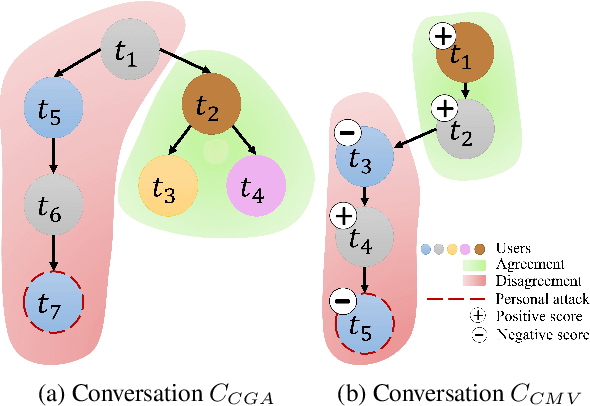
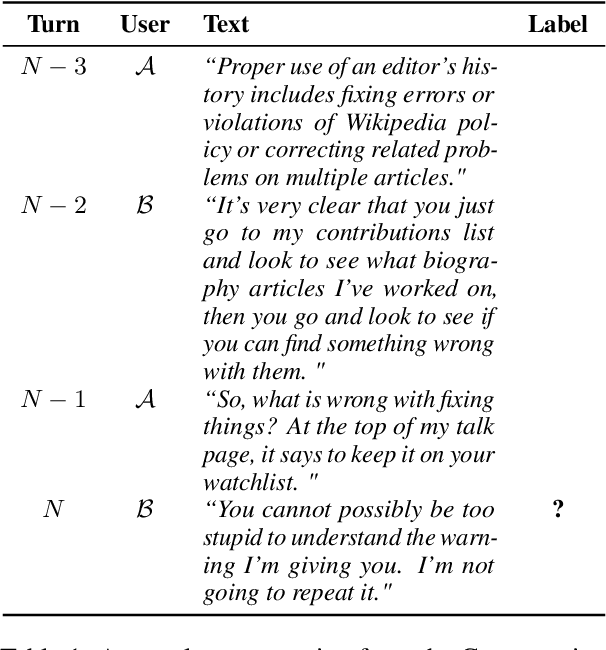
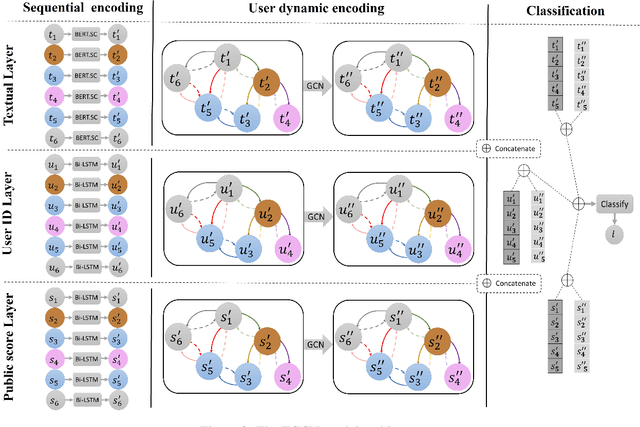
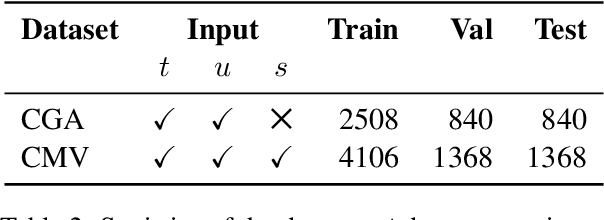
Abstract:Online conversations are particularly susceptible to derailment, which can manifest itself in the form of toxic communication patterns like disrespectful comments or verbal abuse. Forecasting conversation derailment predicts signs of derailment in advance enabling proactive moderation of conversations. Current state-of-the-art approaches to address this problem rely on sequence models that treat dialogues as text streams. We propose a novel model based on a graph convolutional neural network that considers dialogue user dynamics and the influence of public perception on conversation utterances. Through empirical evaluation, we show that our model effectively captures conversation dynamics and outperforms the state-of-the-art models on the CGA and CMV benchmark datasets by 1.5\% and 1.7\%, respectively.
 Add to Chrome
Add to Chrome Add to Firefox
Add to Firefox Add to Edge
Add to Edge